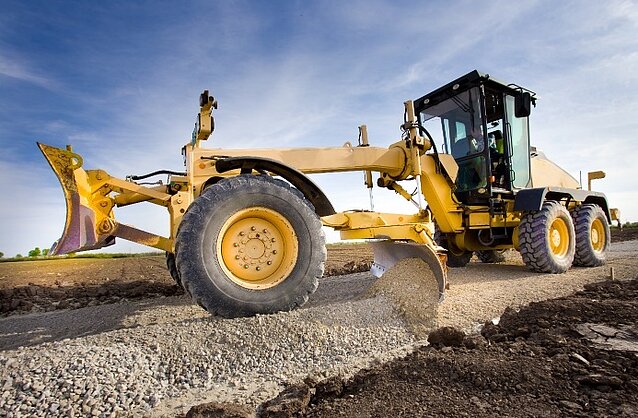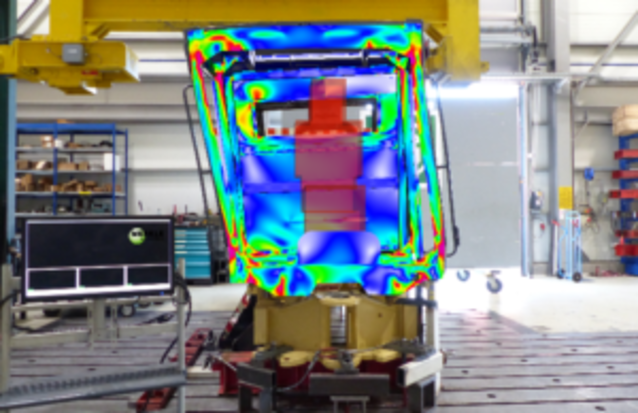Rollover of a colossus

How FEM simulation can help optimize and safeguard rollover protection for construction machinery (ROPS)
Graders are among the oldest machines in earthmoving. They are used to pave the way, be it in road and path construction for the substructure, for unpaved roads and paths, or for sports fields.
But what happens when such a behemoth loses its balance and starts rolling sideways? And what happens to the driver in his cabin? Does the rollover protection still offer him enough room to survive?
This scenario is safeguarded by the so-called ROPS test according to DIN ISO 3471. ROPS refers to the Roll Over Protection Structure, i.e. the rollover protection or rollover cage.
In the three-stage test, specified forces, which depend on the mass of the construction machine, are applied in different directions to the deformed model of the preliminary stage. At the end, the survival space (deflection-limiting volume, or DLV for short) is examined, into which nothing is allowed to penetrate.
The test is not entirely cheap; after all, the cabin with rollover protection is just scrap metal afterwards. It is even more expensive if the test is not passed and the cabin has to be reinforced and tested again.
This is where simulation via an FEM model can help, because the results of the simulation are not only very accurate compared to the test carried out, they also reveal weak points and help to optimize them in a targeted manner by means of FEM variant calculations carried out quickly. The costs for the test are then incurred only once and the cabin, including rollover protection, is only as stable as it needs to be. This saves weight and money.
Figure 2 shows the test of a 24-ton grader.
In Figure 3, we have superimposed the deformations and stresses from the simulation result on the tested model.
There are hardly any differences between the test and the simulation from the FEM calculation, much to the amazement of our customer.
Since we have been performing such simulations for decades for different industries, we know exactly what is important when modeling the structure of the cabin or the rollover protection, the weld seams, the connecting elements and the applied material laws.
Not only construction machines, but also agricultural machines, forestry machines, Unimogs and even cabins for cable cars can be analyzed and optimized with the help of simulation.
If the masses become smaller and the speeds greater, we then move into the area of crash simulation. But that is another topic.
Have we aroused your curiosity? We would be happy to show you in a non-binding appointment, also via Teams or Skype, how we can also help you with your products to save time, money and nerves.
Send us a short mail with the subject ROPS via our contact form. We will then get in touch with you immediately.
Your Stefan Merkle

PS: There is another similar test:
The FOPS test (Falling Object Protective Structure). FOPS refers to a protective structure of driver's cabs against falling objects from above. It is an extension of the rollover protective structure (ROPS). Here, additional bracing frame and lattice elements are installed in the cabs of construction machines. If an object falls onto the operator's cab, the cab is only slightly deformed and the construction equipment operator is effectively protected.
This protective structure is used for construction equipment operating in mining or open-pit mining or in demolition. We often perform both tests mathematically on the same models.


